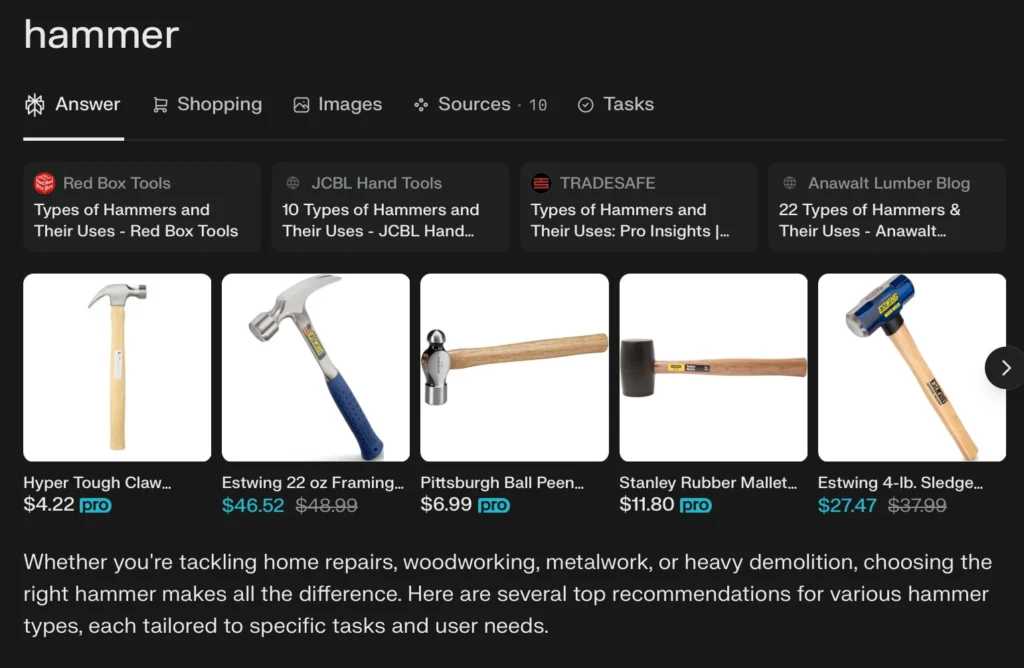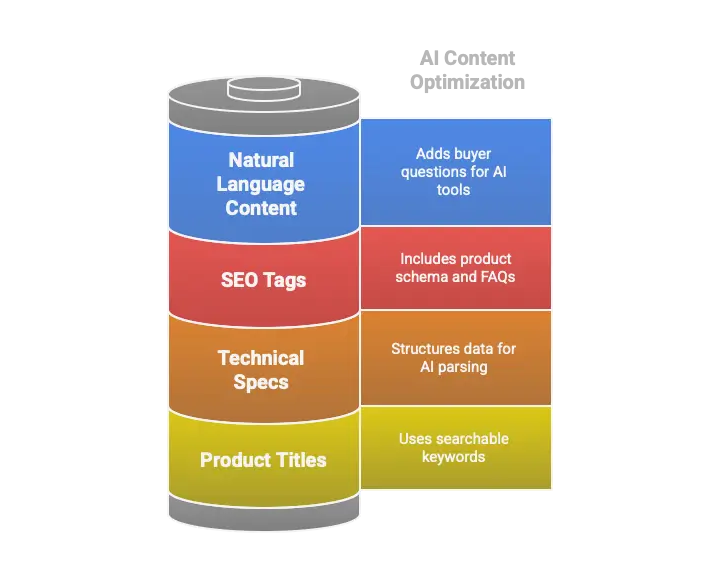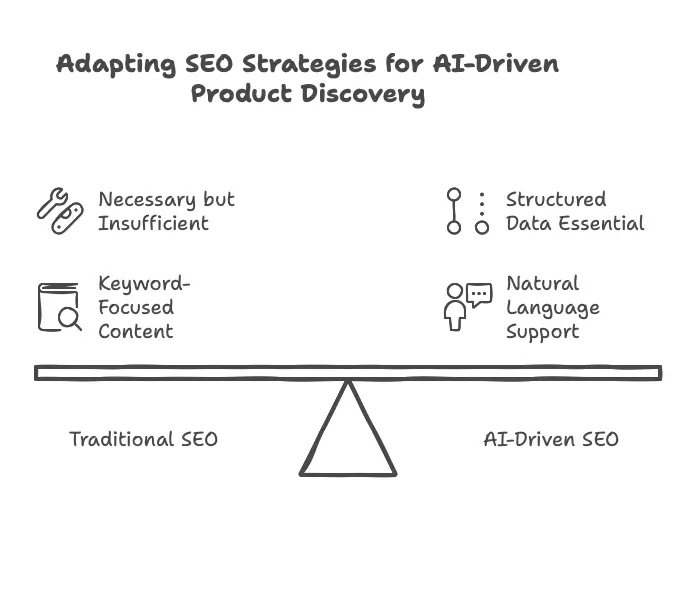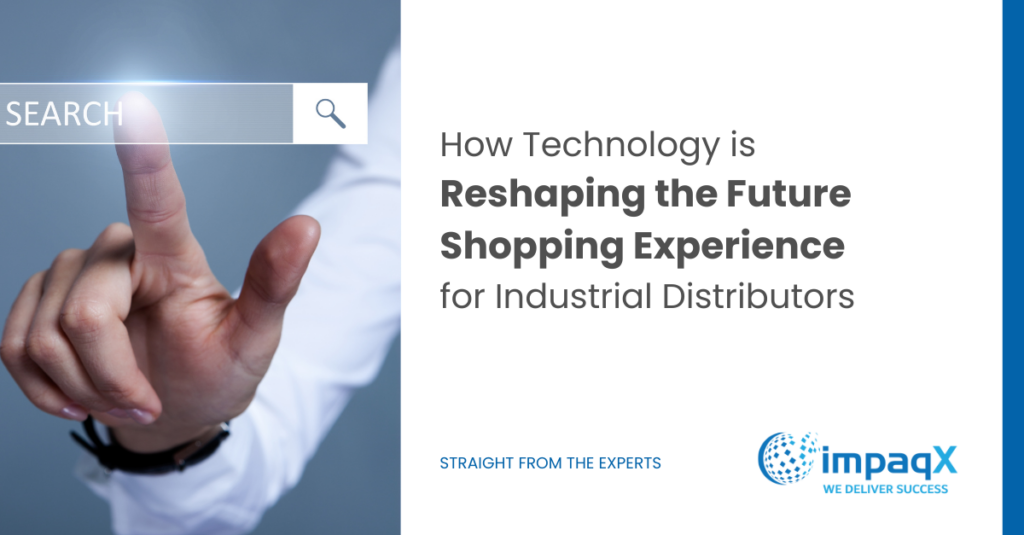Digital Marketing Insights

Dan Bronson
Partner, Marketing / SEO / Analytics
If you’re managing an ecommerce site for an industrial distribution business, you’ve likely noticed a shift—not just in what your customers expect, but in how they go about looking for it. The traditional B2B buyer isn’t picking up the phone first anymore. They’re starting their search in front of a screen, and more often than not, they’re asking AI for help.
I’ve had several clients ask me lately: “How do I optimize my site to rank when users are turning to AI tools instead of traditional search engines?” It’s a valid concern—and one that demands a proactive response. Technology isn’t just changing how people shop—it’s redefining what a good shopping experience looks like.
In this post, we’ll break down: – How emerging AI technologies are shaping B2B ecommerce – What this means specifically for industrial distributors – What steps you should take to keep your ecommerce site relevant, searchable, and valuable
Let’s dig in.
The Rise of AI in Online Shopping
Conversational Commerce is Gaining Ground
One standout development is Perplexity AI’s “Buy with Pro” program, which lets users move seamlessly from research to purchase with one-click checkout and free shipping for subscribers. Designed as an AI-native shopping experience, “Buy with Pro” integrates product discovery, decision support, and transactions into a single workflow. It provides:
- Real-time AI-generated product briefs that summarize key considerations
- Conversational product search where users ask complex, intent-driven queries
- Unbiased recommendations with transparent sources and no affiliate influence
- Streamlined checkout with saved preferences and payment methods

This level of intelligent convenience is resetting expectations for what online buying should feel like. While targeted primarily at consumers today, it signals the trajectory B2B ecommerce must follow—especially in sectors like industrial distribution, where complexity and volume make efficient decision support essential. It highlights a trend where search, evaluation, and transaction are being collapsed into a single, AI-guided experience. This model is reshaping expectations not just for consumers, but increasingly for B2B buyers who want the same convenience when sourcing complex industrial products.
One of the biggest shifts we’re seeing is the move from keyword-based searches to conversational queries. AI tools like Perplexity AI and Google Shopping’s AI Mode are turning traditional product discovery into an interactive, AI-guided conversation.
For example, instead of typing “industrial floor cleaner 5-gallon,” a buyer might ask, “What’s the best heavy-duty floor cleaner for warehouse operations?” AI systems interpret intent, match specs, and deliver tailored suggestions in seconds.
AI is Also Behind the Curtain
This isn’t just about how buyers search. Google Shopping now runs on Gemini AI, crunching 50 billion product listings in real time. Tools like Shopify’s Shop.app offer split chat-and-browse views, bringing AI and ecommerce together in seamless user experiences.
For B2B, this means search habits are changing—and if your ecommerce setup isn’t keeping up, you risk being left out of the conversation entirely.
The New B2B Industrial Buyer Profile
They’re Digital First (and AI-Enhanced)
According to recent findings, 89% of industrial B2B buyers use AI during at least one stage of their purchasing journey. Whether it’s vendor discovery, product comparison, or justifying spend to internal stakeholders, AI is playing a growing role in how buyers gather and evaluate information.
Also worth noting: – 65% of B2B industrial buyers make at least one online purchase annually, up from 45% just a few years ago. – 77% are willing to spend over $50,000 online, debunking the myth that big-ticket industrial sales don’t happen digitally.
It’s a Multi-Phase, Multi-Stakeholder Process
Industrial purchases often span eight decision phases—from recognizing a problem to final procurement. The process can take weeks or months, and buyers often juggle: – Strict technical requirements – Multiple suppliers – Significant financial scrutiny
AI can support this complex decision-making environment by matching technical specs, highlighting value, and accelerating early-stage research—but human expertise still matters for final decisions and long-term relationships.
From Research to Real-Time: How AI is Changing the B2B Buying Process
Smarter Specification Matching
AI tools are becoming increasingly capable of helping B2B buyers match highly specific technical criteria to large product catalogs. By using structured product data and AI-augmented logic, distributors can enable customers to discover exact-fit solutions based on real-world requirements.
To support this: – Product listings must include rich, structured data – Search systems should understand natural language – Filters and recommendations need to adapt in real time
Predictive Procurement: The Next Step
Machine learning isn’t just helping with discovery—it’s transforming inventory and purchasing decisions. AI tools now assist with: – Forecasting demand based on seasonality and usage patterns – Optimizing order timing to reduce holding costs and prevent stockouts – Analyzing supplier performance for cost-effectiveness and reliability
This moves procurement from reactive to proactive—and if your ecommerce site can support this level of data insight, you’re not just selling products. You’re becoming a strategic partner.
What Ecommerce Managers at Industrial Distributors Should Be Doing
1. Modernize Your Ecommerce Stack
Industrial ecommerce needs are vastly different from B2C. Your platform must handle: – Advanced PIM (Product Information Management) systems – Tiered pricing and customer-specific contract structures – Seamless ERP integration
According to industry benchmarks, ecommerce now accounts for 13.4% of revenue in industrial distribution—and that figure climbs to 16% for larger firms.
If your current system can’t scale or adapt to AI-powered browsing behavior, it’s time to consider an upgrade.

2. Implement AI-Driven Search & Recommendations
Forget basic search bars. Your buyers expect: – Search tools that understand technical language – Recommendation engines that suggest based on product usage, not just popularity – AI chat support for on-the-spot product guidance
That’s where tools like Dylog.ai shine. Dylog offers an AI-powered ecommerce search engine specifically designed for industrial distributors. It understands natural language queries like “show me 3-inch schedule 80 PVC elbows compatible with corrosive fluids,” and maps them directly to the most relevant products in your catalog. It’s fast, intelligent, and built for scale—critical for distributors managing tens of thousands (or millions) of SKUs.
Unlike tools like Perplexity AI, which serve general-purpose AI queries, Dylog.ai is purpose-built for ecommerce platforms, meaning it can be integrated directly into your site to improve conversions, reduce support burden, and surface the right products the first time.
3. Optimize Product Content for AI Discovery
If customers are asking AI what to buy, you need to ask: Can AI find and understand my product pages?
Your content should include: – Clear, structured technical specifications – Real-world use cases and compatibility notes – Descriptive titles and schema markup – Natural language Q&A sections
Here’s a quick checklist you can follow:
Optimization Area | Actions to Take |
Product Titles | Use descriptive, searchable terms |
Technical Specs | Structure data fields for AI parsing |
SEO Tags & Schema | Include product schema & FAQs |
Natural Language Content | Add questions your buyers ask AI tools |

Addressing the AI vs Search Engine Shift
This one’s big.
More of your customers are skipping Google and going straight to AI tools for product discovery. That means: – Traditional SEO is necessary but not sufficient – Your data must be machine-readable and query-friendly – You need to understand how AI tools parse and rank ecommerce content
Clients often ask me how to “rank” in Perplexity or similar tools. The answer lies in structured, AI-readable product data, clear site architecture, and natural language support across your content.

Building a Future-Ready Strategy
Combine Tech with Human Touch
Even as AI grows in importance, complex B2B purchases still rely on human relationships. The most effective distributors: – Use AI for product discovery and quoting – Lean on field sales for custom specs and post-sale support – Train teams as digital adoption specialists
This hybrid approach ensures your ecommerce site is not just a catalog—but a platform that helps buyers solve problems and move faster.
Invest in Analytics and Change Management
If you can’t measure it, you can’t improve it. Invest in analytics platforms that track: – Buyer behavior across channels – Product interaction trends – Conversion bottlenecks
And equally important—bring your team along for the ride. Define which customers are better served digitally, and which require a high-touch, assisted approach. Use this to build smart channel strategies and give field reps the tools they need.
Final Thoughts: Don’t Just Compete—Lead
The future of B2B ecommerce isn’t waiting around. AI is already changing the way buyers search, shop, and decide. For industrial distributors, this means a new kind of competition—one based not just on price or availability, but on ease of use, speed of discovery, and digital sophistication.
If you’re managing an ecommerce site today, your job is part technologist, part strategist. Your site isn’t just a destination—it’s a decision-making engine.
So ask yourself: – Is your ecommerce site ready for natural language shopping? – Are your product pages structured for AI assistants? – Is your team aligned around a hybrid AI + human selling strategy?
Now is the time to start making these adjustments. Because in the future of industrial procurement, those who adapt fast—and smart—will be the ones who lead.
Need help positioning your ecommerce site for the AI revolution? Let’s talk. I’ve worked with multiple clients tackling exactly this challenge—and I’d love to hear where you are in your journey.

